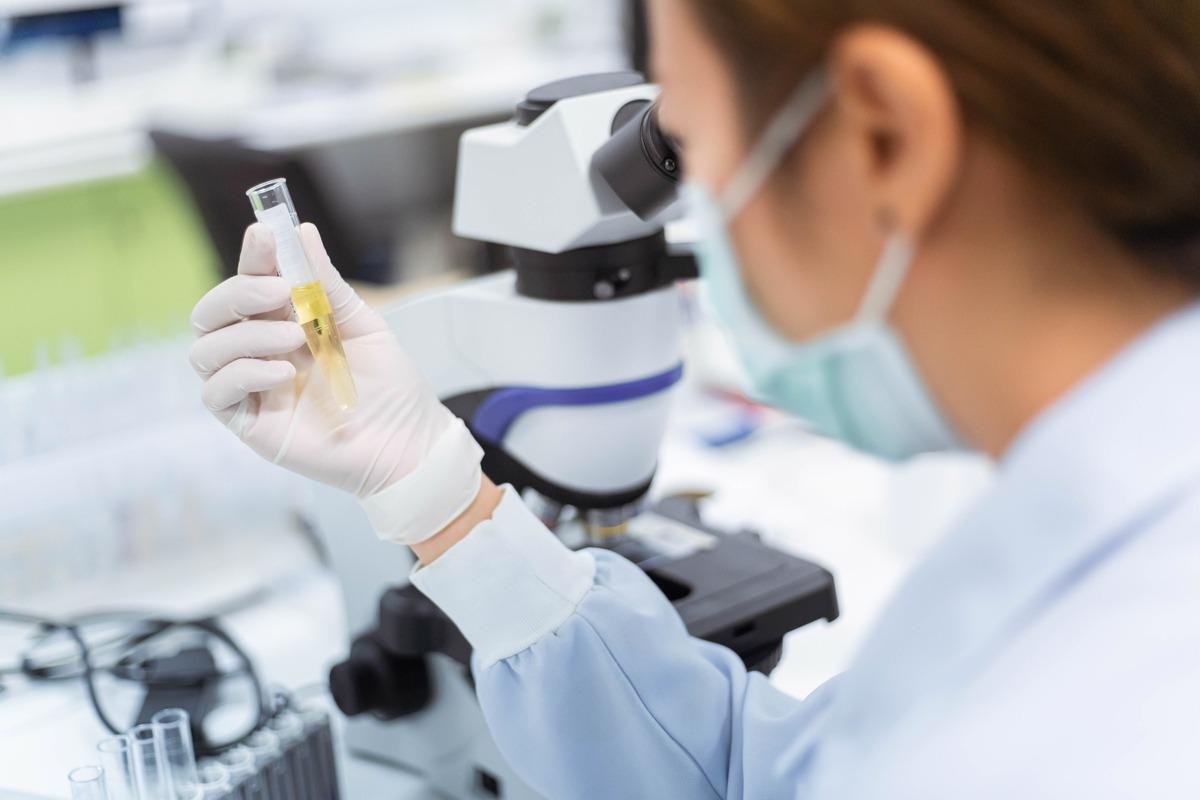Severe acute respiratory syndrome coronavirus 2 (SARS-CoV-2) the causative agent of coronavirus disease (COVID-19) has caused nearly 493 million infections with over 6.15 million reported deaths. SARS-CoV-2 is a beta-coronavirus that usually infects bats, but harbors the potential to infect humans as well.
 Study: Evidence for SARS-CoV-2 Spike Protein in the Urine of COVID-19 Patients. Image Credit: Near D Krasaesom/Shutterstock
Study: Evidence for SARS-CoV-2 Spike Protein in the Urine of COVID-19 Patients. Image Credit: Near D Krasaesom/Shutterstock
Background
SARS-CoV-2 enters the human host by attaching its spike protein (S) to human angiotensin-converting enzyme 2 (ACE2) receptors. Hence, screening for the spike protein could be a possible potent method for monitoring SARS-CoV-2 infections. Human ACE2 is expressed in the epithelial cells of the renal, alveolar, cardiac, arterial, and gastrointestinal systems, suggesting a possibility of invasion of other organs by the virus in addition to the respiratory system.
The study
A study published in Kidney360 analyzed the presence of SARS-CoV-2 spike protein in urine samples of the infected patients. In this study, SARS-CoV-2 infection was confirmed by polymerase chain reaction (PCR) tests conducted on samples extracted through nasopharyngeal swabs (NP-PCR).
Results
Urine samples were collected from two hospitals (including a children’s hospital). To detect the SARS-CoV-2 spike protein in the urine samples, a sandwich enzyme-linked immunosorbent assay (ELISA) was developed using biotinylated antibodies and anti-spike monoclonal antibodies. The assay was then optimized using urine from the SARS-CoV-2 negative individuals and a purified recombinant S1 antigen.
The assay was utilized to determine the lower limit of detection (LOD) – 5ng/ml of protein in urine. HCoV-HKU1 (coronavirus causing common cold and moderate clinical impact) and SARS-CoV-2 recombinant spike proteins were used to evaluate the specificity of the antibodies.
No cross-reactivity was detected with SARS-CoV or HCoV-HKU1 spike protein at LOD, although ELISA revealed a weak signal with SARS-CoV spike protein at LOD. Antibody specificity for SARS-CoV-2 spike protein was confirmed using Western blot analysis.
Using the assay, 253 urine samples (from 152 patients) were examined for SARS-CoV-2 spike protein. Of these, 203 samples (from adults and children) were SARS-CoV-2 NP-PCR positive. SARS-CoV-2 NP-PCR negative samples from healthcare workers and children, those collected pre-COVID-19 pandemic, and samples from adult SARS-CoV-2 negative participants were used as controls.
Measurements were standardized by calculating the protein-creatinine ratio in the urine samples. Out of the 203 samples, 29 were SARS-CoV-2 spike protein-positive. Interestingly, high levels of SARS-CoV-2 spike protein were detected from the urine sample of one SARS-CoV-2 NP-PCR negative child.
While no SARS-CoV-2 spike protein was detected in the urine samples from NP-PCR positive children, pre-COVID-19 participants, and adult health care workers. A correlation between gender and SARS-CoV-2 spike protein could not be detected among 20 participants out of the 23 SARS-CoV-2 spike protein-positive participants. No information was available on the gender of the remaining three participants.
Additionally, there was no significant correlation between body mass index (BMI), duration of hospitalization, and SARS-CoV-2 spike protein positivity. Albumin and cystatin C also did not elicit a correlation with age, BMI, and hospitalization duration. The presence of SARS-CoV-2 spike protein did not show an association with the SARS CoV-2 viral load in SARS-CoV-2 NP-PCR-positive patients.
SARS-CoV-2 spike protein was detected in 17 (out of 23) SARS-CoV-2 positive patients from days 1 to 44 during the hospitalization tenure (two urine samples were collected from each patient). However, SARS-CoV-2 spike protein concentration could not be correlated to the day of urine sample collection. Only two out of 93 NP-PCR-positive patients had viral RNA in urine; one (female) was positive for both viral RNA and spike protein.
SARS-CoV-2 spike protein-positive adults revealed a band of 78.3 kD co-migrating with the recombinant S1 antigen. However, S1 protein was not found in health care workers, pre-COVID-19 samples, and SARS-CoV-2 positive adults with S1 protein detected in urine (Ur-S1).
Urine albumin concentration was 0.073 in the NP-PCR positive cohort (collected from ten patients who underwent kidney biopsy before the pandemic); whereas the urine cystatin C concentration was 0.00014. Among the SARS-CoV-2 spike protein-positive patients, urine albumin concentration was 0.089, whereas the concentration of cystatin C was 0.00012.
Among the NP-PCR-positive patients, urine albumin concentration was 0.061 while cystatin C concentration was 0.00012. Meanwhile, in the NP-PCR positive-health care workers, the urine albumin concentration was 0.011 while the concentration of cystatin C was 0.00007.
A significant correlation between SARS-CoV-2 spike protein concentration and elevated albumin-creatinine ratio in urine was detected. Meanwhile, no correlation was found between albumin and cystatin C levels and SARS-CoV-2 spike protein levels in the urine samples collected from two NP-PCR-positive patients.
There was no significant difference between the presence or absence of SARS-CoV-2 spike protein and the serum creatinine level. No significant difference was found between the fractional excretion of urea (FEUrea) and sodium (FENa) levels, and spike protein-positive and -negative samples.
Overall, 49 serum samples from 38 SARS-CoV-2 positive patients were screened using spike capture ELISA assay. Four samples from three participants revealed serum spike protein levels above the LOD. None of the samples were positive for the ELISA assay. Thus, no association was present between high levels of urine spike protein and serum spike protein. concentration.
Conclusion
The findings hint toward the possibility of renal complications due to COVID-19, warranting more studies on the renal effects of SARS-CoV-2 infection.